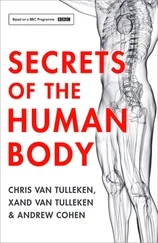1 ...8 9 10 12 13 14 ...20 What is meant to solve the problem is the patient’s state. This is the life resource, the certain configuration of sensations in the body.
Perceptions of situations and responses to them vary widely. What is a difficult problem for one, is nothing for the other; when ones react with all their beings the others can stay completely indifferent. This observation makes you think about the initial state in which a person perceives the situation, evaluates it and forms a reaction to it. The constitutional and genetic factors, the early history of the individual and so on, play an important role in the formation of the patient’s state. It is important that by the time of the meeting with the psychotherapist, the result of the life of this particular person (with his genes, personal history and education) is presented in the form of a state with a certain configuration of internal sensations.
Temperature above 39 degrees
There is a number of situations when the patient’s condition itself (for example, tension) is a problem. As the temperature in case of inflammation goes above 39 degrees. The increase in temperature is natural, of course, but not to such an extent.
Entering the psychotherapeutic room, the patients do not always know what they did it for: in order to solve their problems, or to change their condition. (The third option is the question of how to constructively apply their condition to the problematic situations without changing it a lot). In fact, the problems of the patients are solved outside the therapeutic room. They come here to rate their state of mind in which they try solving the problems and to optimize it.
Psychocatalysis of body sensations is a method of changing the patients’ state and restoring their resources. It is not about solving their problems, unless, we consider the state of their health a special problem. In this case it is a «metaproblem’, the solution of which determines the solution of all other problems.
Separation of the concepts of “psychotherapy’ and “exchange of experience’
It is known that some psychotherapists, including the most authoritative, like M. Erickson or A. Alexeichik, did not shy away from acting as advisers to their patients. There is nothing unnatural in it: a wise person shares with the other one, who is not so wise, their life experience, possibilities, and the program of actions. Such advice of the psychotherapist is distinguished by the fact that it is given technically, “with the special approach’. The instructions remain in the patient’s mind until their full implementation… But it is not psychotherapy – it is an exchange of experience in solving different problems between the experienced and inexperienced persons. The same applies to psychological “problem’ counseling.
We are going to talk about psychotherapy, about helping to change the patient’s state . With such an approach the problems of life will go beyond the brackets. In the field of our study there will be only living beings themselves. The question will be only the following: in what state do they live? In what state do they solve their problems? One of the basic beliefs of the SPT is that it is good to solve problems when the one who solves them is a calm state – which is consistent with the position expressed by Freud: responsible decisions should be taken only after analysis.
The main concern of a somatopsychotherapist is to find what the patients’ resources, their energy, and their attention are being spent for. The work of a SPA therapist can be compared with the work of a prospector. The golden nuggets, that they extract, are the «petrified emotions.» The fact, that they look more like coal, should not be embarrassing. «Gold’, hidden in this ore, is the priceless energy of life, like human life itself is.
Not in blind
Activation of “moving sensations’, such as described in the case of the twelve-year-old boy, is quite common both in the states of “psychic genesis’ and somatic disorders. It is always surprising, delighting and reassuring when the body itself specifies and solves all the issues.
Typically, the sensations themselves are mostly «blind’. As for somatopsychotherapy, the control over this process is particularly important.
First and second level questions
To find out the characteristics of what is disturbing the somatopsychotherapist can go in two directions: the questions of so-called second level require more body energy for the implementation of the reaction, because the expected response is uncertain and creative. “Where is your fear ?” – “ In the belly ”. “ What does it feel like ?” – “ A jellyfish.”
The «first level’ questions are less energy-intensive, and the answers are more predictable. No wonder they are called guiding questions. «Where do you your feel fear: in the head, in the chest, in the stomach, or anywhere else? Is it something big or small, light or dark, heavy or light, dense or soft, or anything else ?» You can ask about more details, bringing the questions to the «zero level.» «Does it weigh a hundred grams, two hundred, three hundred, five hundred, a kilo, more, less? Does it feel like gas, liquid, mass, stone, wood, metal, or anything else? Is it an object, a plant, an animal, or anything else?» The series of questions can be continued.
However, to go «below zero’, i.e. to assert something or to impose one’s intuition, is highly undesirable. Unfortunately, this principle is often violated. (And, of course, always with the best intentions!)
“A well working patient’
Being in the “working’ process, a patient begins to understand what is required. The questions become more concise. During one session, already by the third approach (“approach’ means a complete cycle of work; there can be several complete cycles during one session), a well-taught patient can quite “correctly’ answer “simple’ questions. Where are the sensations related to that age? (This refers to the age indicated in the figure in the drawing test). And the patient says, “In the head.” “ What is there?” – “ Dark heavy mass.” That means that the patient does not need specifying “tips’ such as: “Where are the sensations associated with the exact age: in the head, chest, abdomen, or anywhere else? Is it something big, small, light, or dark? What is it made of…?” anymore.
But even for such an «ideal’ patient some clarifying questions can be appropriate: «Is it in the forehead, in the back of the head, in the crown, or in the temples? How many grams is it? What is its size or volume?»
Somatopsychotherapy “Debuts”
Psychotherapy works with disorders. Disorders can be acute or chronic. Usually the patients come to the first appointment to the psychotherapist when chronic disorders have been supplemented with the acute ones and their life has become unbearable. What does the therapists do at the first meetings? They react to the patient’s acute disorders. What does they do next? They respond to the chronic disorders that the patient often does not realize.
The acute disorder can again occur in the patients when their fate is changing. In general, the probability of meeting an acute state at the beginning of psychotherapeutic contact is higher than in the future.
Why do I mention this well-known to every therapist fact? Because it is related to the topic of this chapter. At different phases of work with a patient, different ’approaches’ will be preferable, different ’debuts’ will be played.
Читать дальше












